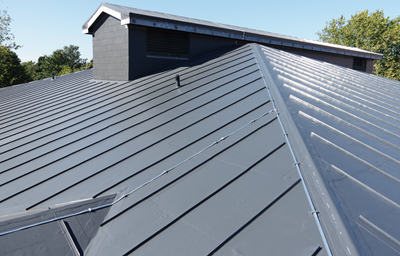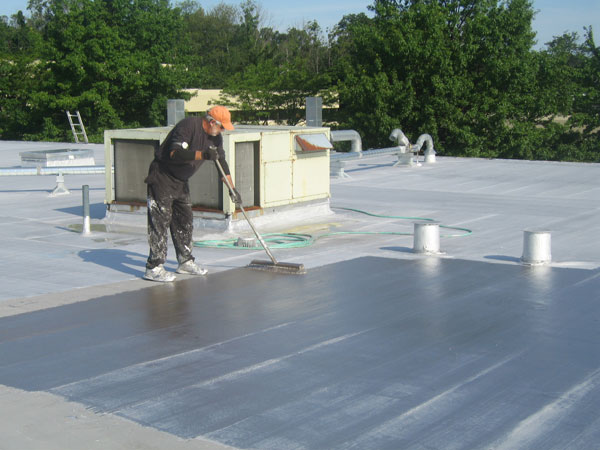SINGLE-PLY
Asphalt shingles are categorized as either organic-based or fiberglass-based
Single-ply roofing systems have different finishes and the direct application varies depending on the manufacturer’s specifications. They are recognized for their ease of installation, competitive cost and flexible structure.
The single-ply membranes can be classified into two categories: Thermosets and Thermoplastics. Thermoset membranes are compounded from synthetic rubber polymers and are generally ideal for large roof areas because of the manufacturing size which reduces or minimizes seams. Thermoplastic membranes are plastic based and have seams that can be hot-air welded to form cohesive laps. They are usually manufactured to include a reinforcement layer, normally fiberglass or polyester that provides additional strength and stability.
The most common types of single ply roofing systems are:
TPO (Thermoplastic Oleyfin)
TPO (Thermoplastic Oleyfin) roofing systems are among the fastest growing commercial roofing products and have gained broad industry acceptance for their performance and installation advantages. As the demand for heat-reflectivity and energy efficiency increases, this roofing type has moved to the forefront of the industry. TPO single-ply roofing membranes continue to provide exceptional resistance to ultraviolet, ozone and chemical exposure.
Torch down roofing
TDR systems consist of layers of fiberglass and polyester with bitumen that are added to the regular tar and gravel layering system. These extra sheets are torched down in the overlap areas during the installation process, using large flame throwing torches that melt the asphalt at the seams to join them together.
Modified Bitumen
MB systems are asphalt composition roofs with the addition of SBS (Polystyrene Butadiene Styrene) rubber or APP (Atactic Polypropylene). SBS materials are applied with hot-mopped asphalt, a cold-apply adhesive, torches for hybrid systems or self adhesive 2 part systems. Within the majority of the United States, APP modified systems are torch-applied.

Upon application, the carrier solvent evaporates from the coating, leaving a cured, water resistant film. The primary advantages of roof coatings and cements are their economical, proven performance life, and ease of use. Roof coatings and cements are generally one-component products that can be applied directly from the container. Today’s coating and cements are versatile and applicator friendly. Non-flammable products are also available.

Polymeric roof coatings and cements
PRCC can be formulated with a variety of synthetic resins such as acrylic, neoprene, styrene butadiene, urethane, polyvinyl acetate and others. The enhanced performance properties achieved by using these resins include, but are not limited to: low temperature flexibility, chemical resistance and elasticity. Like bituminous coatings, polymeric coatings can be either solvent or waterborne. In addition, they can also incorporate fibers, fillers, clays and pigments to achieve the desired consistencies and properties.
Polymer Modified coatings
PMC and cements are a hybrid of the previously discussed groups. They are manufactured by combining a portion of the polymeric technology with bitumen technology. The resultant coating or cement exhibits an economical blend of performance properties and characteristics. These coatings and cements are also available in solvent and water borne versions, with a selection of consistencies and properties.
